
Herbs
Amla: Phyllanthus Emblica
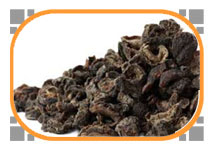 The word "amla" is derived from the Sanskrit word "amlaki". The fruit has a sour and bitter taste. Except for the seed, all parts of the amla fruit are edible. A major ingredient in most ayurvedic products, especially the Chyavanprash and the Triphala churna, amla is a potent fruit known for promoting health and longevity. amla is considered to be one of most powerful herbs for improving health and well-being. Amla is rich in vitamin C. A glass of amla juice contains twenty times more vitamin C than a glass of fresh orange juice.
The word "amla" is derived from the Sanskrit word "amlaki". The fruit has a sour and bitter taste. Except for the seed, all parts of the amla fruit are edible. A major ingredient in most ayurvedic products, especially the Chyavanprash and the Triphala churna, amla is a potent fruit known for promoting health and longevity. amla is considered to be one of most powerful herbs for improving health and well-being. Amla is rich in vitamin C. A glass of amla juice contains twenty times more vitamin C than a glass of fresh orange juice.
Arjun Chaal: Termenalia Arjuna
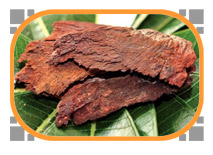 Arjuna tree bark (Latin Name: Terminalia arjuna Wight & Arn.) is a cardioprotective botanical used in Ayurveda (East Indian traditional medicine) since 2500 B.C. It has remarkable cardioprotective, heart muscle strengthening properties.
Arjuna (Bark) is Heart tonic, that helps maintain a healthy heart and reduces the effects of stress and nervousness. Arjuna promotes effective cardiac functioning and regulates blood pressure.
Arjuna tree bark (Latin Name: Terminalia arjuna Wight & Arn.) is a cardioprotective botanical used in Ayurveda (East Indian traditional medicine) since 2500 B.C. It has remarkable cardioprotective, heart muscle strengthening properties.
Arjuna (Bark) is Heart tonic, that helps maintain a healthy heart and reduces the effects of stress and nervousness. Arjuna promotes effective cardiac functioning and regulates blood pressure.
Babul Gum:Gum Akshia
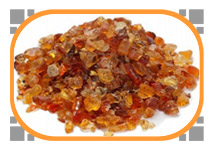 The botanical name of Babool is Acacia nilotica and it belongs to Mimosaceae family. The herb is highly beneficial in Ayurveda. Babul or Acacia Arabica tree is considered to be native of Africa, Middle East and the Indian subcontinent. Babul trees contain crude protein; up to 20% can be found in the leaves and up to 12% is found in the edible pods. The gum that the babul bark yields has multiple medicinal properties. The babul plant consists of compounds such as an active androstene steroid, D-pinitol, gallic acid, and rutin. Baboo is also beneficial for the health of teeth and gums.
The botanical name of Babool is Acacia nilotica and it belongs to Mimosaceae family. The herb is highly beneficial in Ayurveda. Babul or Acacia Arabica tree is considered to be native of Africa, Middle East and the Indian subcontinent. Babul trees contain crude protein; up to 20% can be found in the leaves and up to 12% is found in the edible pods. The gum that the babul bark yields has multiple medicinal properties. The babul plant consists of compounds such as an active androstene steroid, D-pinitol, gallic acid, and rutin. Baboo is also beneficial for the health of teeth and gums.
Bal Harde:Himej, Hydrobalams Black
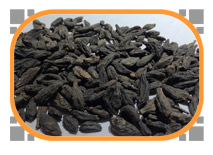 Haritaki fruit is one among The three, that constitute Triphala. It is a very famous rejuvenating herb. Its botanical name is Terminalia chebula and it belongs to Combretaceae family. Chewing the Haritaki fruit causes increase in digestion power. Haritaki helps to ease bowel movement, one of the complications in hemorrhoids. Hareetaki seed kernel is sweet, the fiber part is sour, fruit rind is bitter, skin is pungent and seed is astringent in nature.
Haritaki fruit is one among The three, that constitute Triphala. It is a very famous rejuvenating herb. Its botanical name is Terminalia chebula and it belongs to Combretaceae family. Chewing the Haritaki fruit causes increase in digestion power. Haritaki helps to ease bowel movement, one of the complications in hemorrhoids. Hareetaki seed kernel is sweet, the fiber part is sour, fruit rind is bitter, skin is pungent and seed is astringent in nature.
Belgiri:Aegle Marmeloes
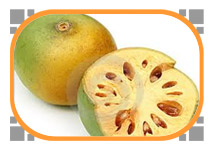 Bael, also known as the “Wood Apple”, is a species native to India. The bael tree is considered to be sacred to the Hindus. A famous drink known as sherbet is made from the bael fruit and it has been known for its medicinal values since 2000 BC.Apart from the fruit, the root, bark, leaves as well as flowers of bel tree have medicinal value. Different parts of this tree have different medicinal qualities. Bel purifies blood and cools the body. Moreover, it is considered good for heart and brain.
Bael, also known as the “Wood Apple”, is a species native to India. The bael tree is considered to be sacred to the Hindus. A famous drink known as sherbet is made from the bael fruit and it has been known for its medicinal values since 2000 BC.Apart from the fruit, the root, bark, leaves as well as flowers of bel tree have medicinal value. Different parts of this tree have different medicinal qualities. Bel purifies blood and cools the body. Moreover, it is considered good for heart and brain.
Chirayata: Kalmegh
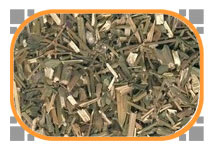 Kalmegh has been used for liver complaints and fever, and as an anti-inflammatory and immunostimulant. In clinical trials, Andrographis extract has been studied for use as an immunostimulant in upper respiratory tract infections and HIV infection. The potential of andrographolide as an anticancer agent is being investigated. However, clinical evidence to support the use of Kalmegh for any indication is lacking.
Kalmegh has been used for liver complaints and fever, and as an anti-inflammatory and immunostimulant. In clinical trials, Andrographis extract has been studied for use as an immunostimulant in upper respiratory tract infections and HIV infection. The potential of andrographolide as an anticancer agent is being investigated. However, clinical evidence to support the use of Kalmegh for any indication is lacking.
Behra:Terminalia Bellirica
 In traditional Indian Ayurvedic medicine, Baheda is known as "Bibhitaki;" in its fruit form it is used in the popular Indian herbal rasayana treatment triphala. The fruit resembles Haritaki fruit but it does not contain the ridges. Its surface is quite plain. This species is used by some tribes in the Indian subcontinent for its mind-altering qualities - they smoke dried kernels. Too much of this can cause nausea and vomiting.
In traditional Indian Ayurvedic medicine, Baheda is known as "Bibhitaki;" in its fruit form it is used in the popular Indian herbal rasayana treatment triphala. The fruit resembles Haritaki fruit but it does not contain the ridges. Its surface is quite plain. This species is used by some tribes in the Indian subcontinent for its mind-altering qualities - they smoke dried kernels. Too much of this can cause nausea and vomiting.
Dhawai flower: Woodfordia Fruticosa.
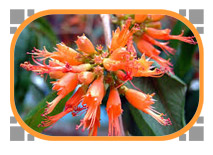 Astringent in taste, light and rough in its properties, dhataki is cold in its effect. Its taste becomes pungent after it is digested. Dhataki pacifies morbidity of kafa and pitta. Flowers and leaves of dhataki are used for medicinal purpose. Therapeutic dose of dhataki powder is 3-5 gms.
Astringent in taste, light and rough in its properties, dhataki is cold in its effect. Its taste becomes pungent after it is digested. Dhataki pacifies morbidity of kafa and pitta. Flowers and leaves of dhataki are used for medicinal purpose. Therapeutic dose of dhataki powder is 3-5 gms.
Dikamali: Gardenia Resinifera Roth.
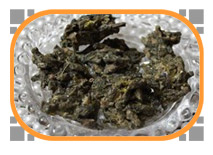 Its gum resin is widely used in abdominal diseases. It is very good carminative medicine. It is kapha & vata suppressment. It is alos antibacterial and hence used in curbing any infection in the body and wounds. It is a good inflammattory, pain reliever. It helps in normalizing the digestion. It is also helful in reducing fever.
Its gum resin is widely used in abdominal diseases. It is very good carminative medicine. It is kapha & vata suppressment. It is alos antibacterial and hence used in curbing any infection in the body and wounds. It is a good inflammattory, pain reliever. It helps in normalizing the digestion. It is also helful in reducing fever.
Harara: Terminalia Chebula, Myrobalan.
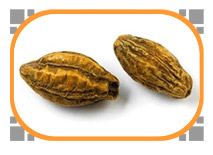 In traditional Ayurvedic medicine, Terminalia bellerica has been used as a "health-harmonizer" in combination with Terminalia chebula and Emblica officinalis. This combination is also used to lower cholesterol and to prevent death of heart tissue. Terminalia contains ingredients that help stimulate the heart. It might also help the heart by lowering cholesterol and blood pressure.
In traditional Ayurvedic medicine, Terminalia bellerica has been used as a "health-harmonizer" in combination with Terminalia chebula and Emblica officinalis. This combination is also used to lower cholesterol and to prevent death of heart tissue. Terminalia contains ingredients that help stimulate the heart. It might also help the heart by lowering cholesterol and blood pressure.
Indrajav: Holrrhena Antidysenterica.
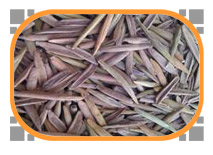 The leaves are acrid, thermogenic, anodyne and hypotensive and are very useful in odontalgia, vitiated conditions of vata and hypertension. The seeds are bitter, astringent, acrid, carminative, constipating, depurative, anthelmintic and febrifuge. They are useful in vitiated conditions of Pitta and Kapha, dyspepsia etc.
The leaves are acrid, thermogenic, anodyne and hypotensive and are very useful in odontalgia, vitiated conditions of vata and hypertension. The seeds are bitter, astringent, acrid, carminative, constipating, depurative, anthelmintic and febrifuge. They are useful in vitiated conditions of Pitta and Kapha, dyspepsia etc.
Kalijeeri: Vernonia Anthmintica.
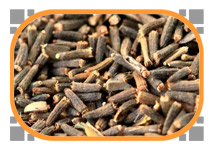 Kali jeeri is a flowering plant native to Iran, Afghanistan and the Indian subcontinent. It is also known as black cumin and black caraway and, depending on the region, by several variations of kali jeeri. The aromatic seeds are used as a spice in Indian cuisine and in Ayurvedic medicine. Because the seeds are reputed to possess diuretic properties, the spice is sometimes suggested to for weight loss. However, little evidence supports the plants use for weight loss.
Kali jeeri is a flowering plant native to Iran, Afghanistan and the Indian subcontinent. It is also known as black cumin and black caraway and, depending on the region, by several variations of kali jeeri. The aromatic seeds are used as a spice in Indian cuisine and in Ayurvedic medicine. Because the seeds are reputed to possess diuretic properties, the spice is sometimes suggested to for weight loss. However, little evidence supports the plants use for weight loss.
Katha: Cutch
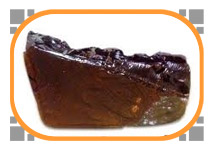 Catechu is an herb. The leaves, shoots, and wood are used to make medicine. The two types of catechu, black catechu and pale catechu, contain slightly different chemicals, but they are used for the same purposes and at the same dose.
Catechu is used for diarrhea, swelling of the nose and throat, dysentery, swelling of the colon (colitis), bleeding, indigestion, osteoarthritis, and cancer.
People apply catechu directly to the skin for skin diseases.
Catechu is an herb. The leaves, shoots, and wood are used to make medicine. The two types of catechu, black catechu and pale catechu, contain slightly different chemicals, but they are used for the same purposes and at the same dose.
Catechu is used for diarrhea, swelling of the nose and throat, dysentery, swelling of the colon (colitis), bleeding, indigestion, osteoarthritis, and cancer.
People apply catechu directly to the skin for skin diseases.
Kuchla: Strychnos Nuxvomica.
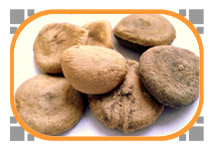 Nux vomica is a plant. The seed is used to make medicine. Despite serious safety concerns, nux vomica is used for diseases of the digestive tract, disorders of the heart and circulatory system, diseases of the eye, and lung disease.
Nux vomica is a plant. The seed is used to make medicine. Despite serious safety concerns, nux vomica is used for diseases of the digestive tract, disorders of the heart and circulatory system, diseases of the eye, and lung disease.
Kauch Beej:Mucuna Pruriens.
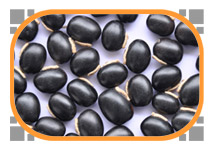 Mucuna pruriens or Kaunch is one of the popular medicinal plant of India. It is widespread over most of the subcontinent and is found in bushes and hedges and dry-deciduous, low forests throughout the plains of India.It is used as a nervine tonic for nervous system disorders. It release bound up testosterone. ncrease blood circulation to the genitals. Eliminate stress and anxiety etc.
Mucuna pruriens or Kaunch is one of the popular medicinal plant of India. It is widespread over most of the subcontinent and is found in bushes and hedges and dry-deciduous, low forests throughout the plains of India.It is used as a nervine tonic for nervous system disorders. It release bound up testosterone. ncrease blood circulation to the genitals. Eliminate stress and anxiety etc.
Kutaj Chaal:Telicherry Bark.
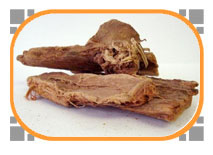 Kutaja is a very famous herb used in treating diarrhoea, irritable bowel syndrome etc. It is used in preparing very common Ayurvedic medicines like Kutajarishta, Kutaj Ghanavati etc.
Kutaja is a very famous herb used in treating diarrhoea, irritable bowel syndrome etc. It is used in preparing very common Ayurvedic medicines like Kutajarishta, Kutaj Ghanavati etc.
Kumbi Flower:Rauwolfia Habitat.
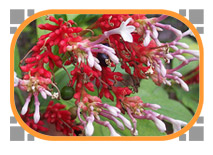 Known as Rauwolfia serpentina sarapgnadha is pungent and bitter in taste. Dry and rough in nature, sarapgandha is useful in epilepsy, insanity, sleeplessness, vertigo and pain. Today sarapgandha is used in condition of sleepless ness, schizophrenia, and high blood pressure.
Known as Rauwolfia serpentina sarapgnadha is pungent and bitter in taste. Dry and rough in nature, sarapgandha is useful in epilepsy, insanity, sleeplessness, vertigo and pain. Today sarapgandha is used in condition of sleepless ness, schizophrenia, and high blood pressure.
Lakh Dana: Shellac, Lac.
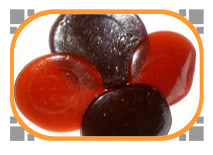 Lac is the resinous protective secretion of the tiny lac insect. The major constituent of sticklac is the resin (70-80%); other constituents present are: sugar, proteins, and soluble salts, coloring matter, wax, sand, woody matter, insect bodies and other extraneous matter; a volatile oil is present in traces. Its Tonic for liver, stomach and intestin. Haemostatis, resolvent of obstructions, jaundice, dropsy, kidney, reduces fat the Adipose persons. Shellac is primarily used as a wood sealer and finisher today. It has the great advantage of being soluble in ethyl or denatured alcohol, an environmentally-safe solvent.
Lac is the resinous protective secretion of the tiny lac insect. The major constituent of sticklac is the resin (70-80%); other constituents present are: sugar, proteins, and soluble salts, coloring matter, wax, sand, woody matter, insect bodies and other extraneous matter; a volatile oil is present in traces. Its Tonic for liver, stomach and intestin. Haemostatis, resolvent of obstructions, jaundice, dropsy, kidney, reduces fat the Adipose persons. Shellac is primarily used as a wood sealer and finisher today. It has the great advantage of being soluble in ethyl or denatured alcohol, an environmentally-safe solvent.
Lodh Chaal: Symplocos Racemosa
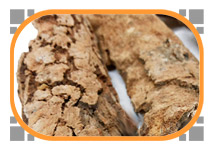 Lodhra is a very important Ayurvedic herb. It is mainly used in bleeding disorders, diarrhoea and eye disorders. Its reference in Ayurveda are found since the time of Sushruta.
Lodhra is a very important Ayurvedic herb. It is mainly used in bleeding disorders, diarrhoea and eye disorders. Its reference in Ayurveda are found since the time of Sushruta.
Mahua: Mahua.
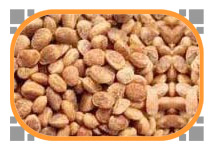 Mahua is a multipurpose tree, mostly grown on wastelands in North and Central part of the country where generally tropical and subtropical climates prevail. Mahua yields both flowers and seeds. Ripe fruits are ready for harvest during May- July. Seeds are taken from ripe fruits. Mahua flowers can be eaten or used to make alcohol.
Mahua is a multipurpose tree, mostly grown on wastelands in North and Central part of the country where generally tropical and subtropical climates prevail. Mahua yields both flowers and seeds. Ripe fruits are ready for harvest during May- July. Seeds are taken from ripe fruits. Mahua flowers can be eaten or used to make alcohol.
Maror Phali: Mardasing/ Helicteres Isora.
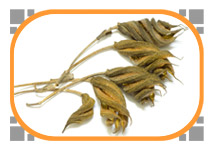 The roots and stem barks are considered to be expectorant, demulcent, astringent and antiglactagogue. Bark is used in diarrhoea, dysentery, scbies, biliousness and is useful in gripping of the bowels. Root juice is used in antidiarrhoeal and antidysenteric formulations. Fried pods are given to children to kill intestinal worms.
The roots and stem barks are considered to be expectorant, demulcent, astringent and antiglactagogue. Bark is used in diarrhoea, dysentery, scbies, biliousness and is useful in gripping of the bowels. Root juice is used in antidiarrhoeal and antidysenteric formulations. Fried pods are given to children to kill intestinal worms.
Nirmali: Strychnos Potatorum.
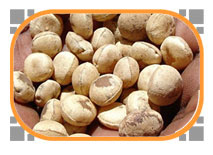 According to Ayurveda, seeds are acrid, alexipharmic, lithotriptic and cure strangury, urinary discharges, head diseases etc. Roots cure Leucoderma whereas fruits are useful in eye diseases, thirst, poisoning and hallucinations. The fruits are emetic, diaphoretic alexiteric etc. According to Unani system of medicine, seeds are bitter, astringent to bowels, aphrodisiac, tonic, diuretic and good for liver, kidney complaints, gonorrhea, colic etc. Seeds are used to purify water.
Seeds are rich source of polysaccharide gum suitable for use in paper and textile industries.
According to Ayurveda, seeds are acrid, alexipharmic, lithotriptic and cure strangury, urinary discharges, head diseases etc. Roots cure Leucoderma whereas fruits are useful in eye diseases, thirst, poisoning and hallucinations. The fruits are emetic, diaphoretic alexiteric etc. According to Unani system of medicine, seeds are bitter, astringent to bowels, aphrodisiac, tonic, diuretic and good for liver, kidney complaints, gonorrhea, colic etc. Seeds are used to purify water.
Seeds are rich source of polysaccharide gum suitable for use in paper and textile industries.
Nagarmotha: Nut grass.
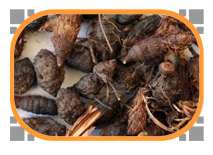 Nagarmotha (Cyperus rotundus), a cosmopolitan weed, is found in all tropical, subtropical and temperate regions of the world. In India, it is commonly known as Nagarmotha and it belongs to the family Cyperacea. The major chemical components of this herb are essential oils, flavonoids, terpenoids, sesquiterpenes, cyprotene, cyperene, aselinene, rotundene, valencene, cyperol, gurjunene, trans-calamenene, cadalene, cyperotundone, mustakone, isocyperol, acyperone, etc.
Nagarmotha (Cyperus rotundus), a cosmopolitan weed, is found in all tropical, subtropical and temperate regions of the world. In India, it is commonly known as Nagarmotha and it belongs to the family Cyperacea. The major chemical components of this herb are essential oils, flavonoids, terpenoids, sesquiterpenes, cyprotene, cyperene, aselinene, rotundene, valencene, cyperol, gurjunene, trans-calamenene, cadalene, cyperotundone, mustakone, isocyperol, acyperone, etc.
Palas Beej: Butea Fromdosa
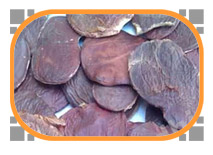 Palash also known as Butea monospermaor flame of the forest is recommended in the digestive disturbances specially involving the liver functions. It also benefits a lot in spleen disorders. Palash powder should be taken for proper healing of bone fractures. It is also recommended as a supplement to prevent age related changes in bones. Palash pacifies the Kapha Pitta Doshas; hence Palash is used in disorders induced by Kapha and Pitta.
Palash also known as Butea monospermaor flame of the forest is recommended in the digestive disturbances specially involving the liver functions. It also benefits a lot in spleen disorders. Palash powder should be taken for proper healing of bone fractures. It is also recommended as a supplement to prevent age related changes in bones. Palash pacifies the Kapha Pitta Doshas; hence Palash is used in disorders induced by Kapha and Pitta.
Sarpagandha: Rauwolfia Habitat.
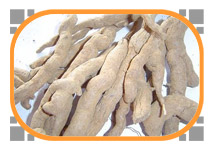 Sarpagandha is generally known for its medicinal properties to treat and cure many diseases. This plant is basically originated in India, though it is an Indo-Malaysian species.Sarpagandha is considered as one of the best-known medicinal plants in the world. The roots contain major Alkaloid constituents, notably Reserpine, Rescin-Namine and Deserpidine, which are used for medical purpose in India. The root of Sarpagandha that carries immense medicinal properties is widely used even in foreign countries, in the treatment of high blood pressure and as a sedative and tranquillising agent.
Sarpagandha is generally known for its medicinal properties to treat and cure many diseases. This plant is basically originated in India, though it is an Indo-Malaysian species.Sarpagandha is considered as one of the best-known medicinal plants in the world. The roots contain major Alkaloid constituents, notably Reserpine, Rescin-Namine and Deserpidine, which are used for medical purpose in India. The root of Sarpagandha that carries immense medicinal properties is widely used even in foreign countries, in the treatment of high blood pressure and as a sedative and tranquillising agent.
Shikakai: Acacia Concinna.
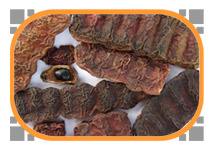 Shikakai as a natural herb is also used as a medicine to make use of its hair strengthening and conditioning properties. In order to get the most out of shikakai, it can be mixed with amla, reetha and henna and then applied to your hair. This mixture is also free from chemicals and is a very efficient natural way.
Shikakai as a natural herb is also used as a medicine to make use of its hair strengthening and conditioning properties. In order to get the most out of shikakai, it can be mixed with amla, reetha and henna and then applied to your hair. This mixture is also free from chemicals and is a very efficient natural way.
Tesu Flower: Butea Monosperma
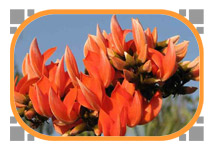 Tesu flowers are traditionally used for colour-play in the spring festival of Holi. Tesu flowers are boiled in water to give a fragrant, deep yellow water which has medicinal properties and prevents skin problems. Flowers of Palash (Tesu ke phool) were used in ancient India in beauty care recipes to improve complexion, suppleness of the skin and disorders of female reproductive organs.
Seeds are applied for the treatment of worm infestations and allergic skin conditions.
Gum is used in Ayurvedic formulations to improve spermatogenesis.
Tesu flowers are traditionally used for colour-play in the spring festival of Holi. Tesu flowers are boiled in water to give a fragrant, deep yellow water which has medicinal properties and prevents skin problems. Flowers of Palash (Tesu ke phool) were used in ancient India in beauty care recipes to improve complexion, suppleness of the skin and disorders of female reproductive organs.
Seeds are applied for the treatment of worm infestations and allergic skin conditions.
Gum is used in Ayurvedic formulations to improve spermatogenesis.
Vidarikand: Ipomea Dilitata
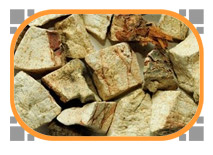 The useful part of Vidarikanda is Tuber and it helps to pacifies vitiated vata, pitta, emaciation. The medicine is found effective in different forms for different diseases such as skin, gastric related complaints such as anorexia, colic, burning sensation, vomiting, inflammation. For females it helps to prevent menorrhagia and general debility. It is also used to promote breast milk production similar to shatavari.
The useful part of Vidarikanda is Tuber and it helps to pacifies vitiated vata, pitta, emaciation. The medicine is found effective in different forms for different diseases such as skin, gastric related complaints such as anorexia, colic, burning sensation, vomiting, inflammation. For females it helps to prevent menorrhagia and general debility. It is also used to promote breast milk production similar to shatavari.
White Kauch Beej: Mucuna Pruriens.
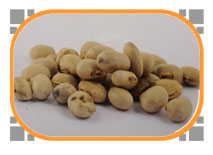 Mucuna pruriens or Kaunch is one of the popular medicinal plant of India. It is widespread over most of the subcontinent and is found in bushes and hedges and dry-deciduous, low forests throughout the plains of India. All parts of Mucuna posses valuable medicinal properties and there is a heavy demand of Mucuna in markets. Research shows mucuna extract is beneficial for reducing cholesterol , lowering blood sugar levels and enhancing mental alertness all without stimulating the central nervous system.
Mucuna pruriens or Kaunch is one of the popular medicinal plant of India. It is widespread over most of the subcontinent and is found in bushes and hedges and dry-deciduous, low forests throughout the plains of India. All parts of Mucuna posses valuable medicinal properties and there is a heavy demand of Mucuna in markets. Research shows mucuna extract is beneficial for reducing cholesterol , lowering blood sugar levels and enhancing mental alertness all without stimulating the central nervous system.

